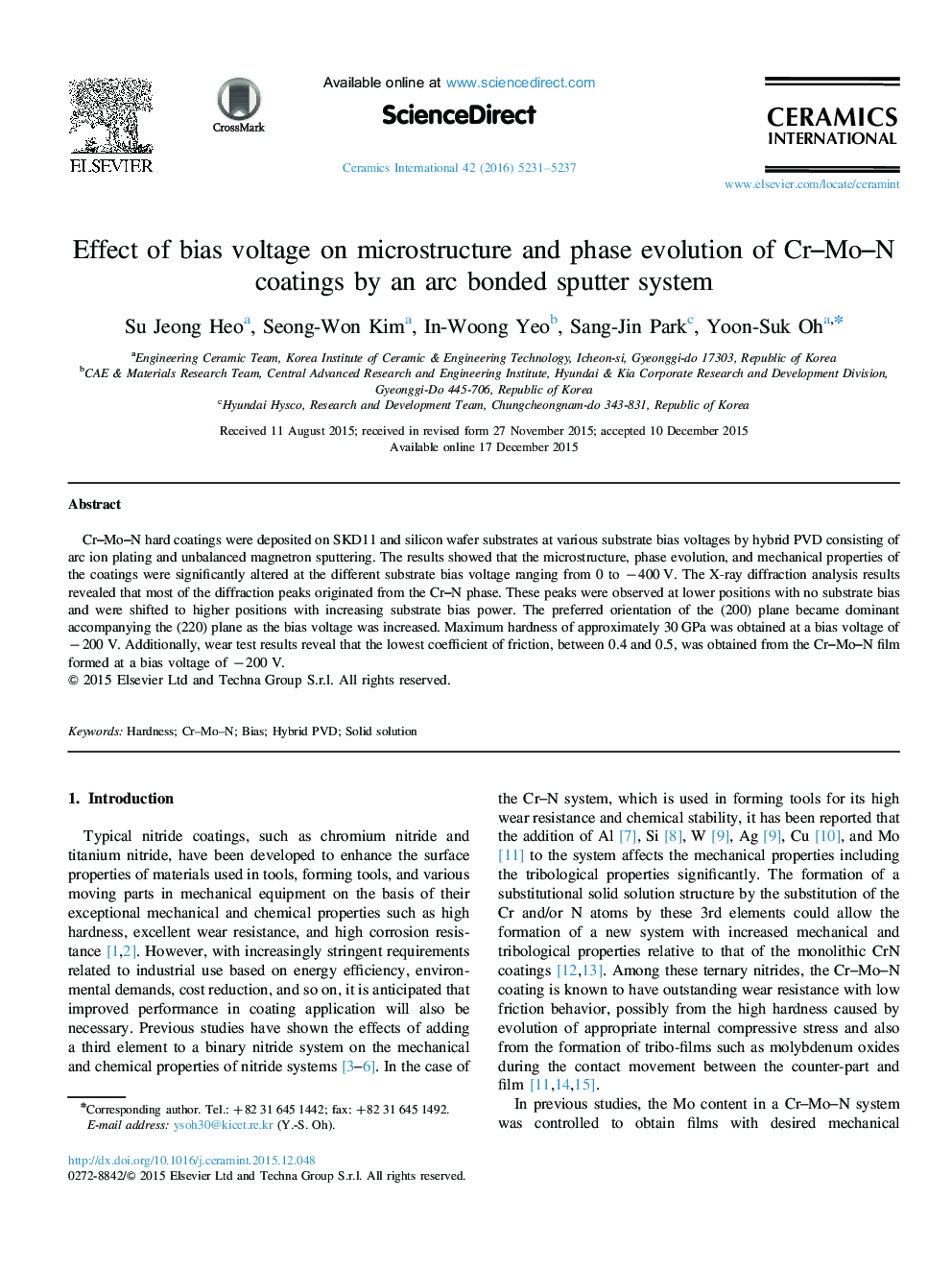| Article ID | Journal | Published Year | Pages | File Type |
|---|---|---|---|---|
| 10624402 | Ceramics International | 2016 | 7 Pages |
Abstract
Cr-Mo-N hard coatings were deposited on SKD11 and silicon wafer substrates at various substrate bias voltages by hybrid PVD consisting of arc ion plating and unbalanced magnetron sputtering. The results showed that the microstructure, phase evolution, and mechanical properties of the coatings were significantly altered at the different substrate bias voltage ranging from 0 to â400Â V. The X-ray diffraction analysis results revealed that most of the diffraction peaks originated from the Cr-N phase. These peaks were observed at lower positions with no substrate bias and were shifted to higher positions with increasing substrate bias power. The preferred orientation of the (200) plane became dominant accompanying the (220) plane as the bias voltage was increased. Maximum hardness of approximately 30Â GPa was obtained at a bias voltage of â200Â V. Additionally, wear test results reveal that the lowest coefficient of friction, between 0.4 and 0.5, was obtained from the Cr-Mo-N film formed at a bias voltage of â200Â V.
Keywords
Related Topics
Physical Sciences and Engineering
Materials Science
Ceramics and Composites
Authors
Su Jeong Heo, Seong-Won Kim, In-Woong Yeo, Sang-Jin Park, Yoon-Suk Oh,
